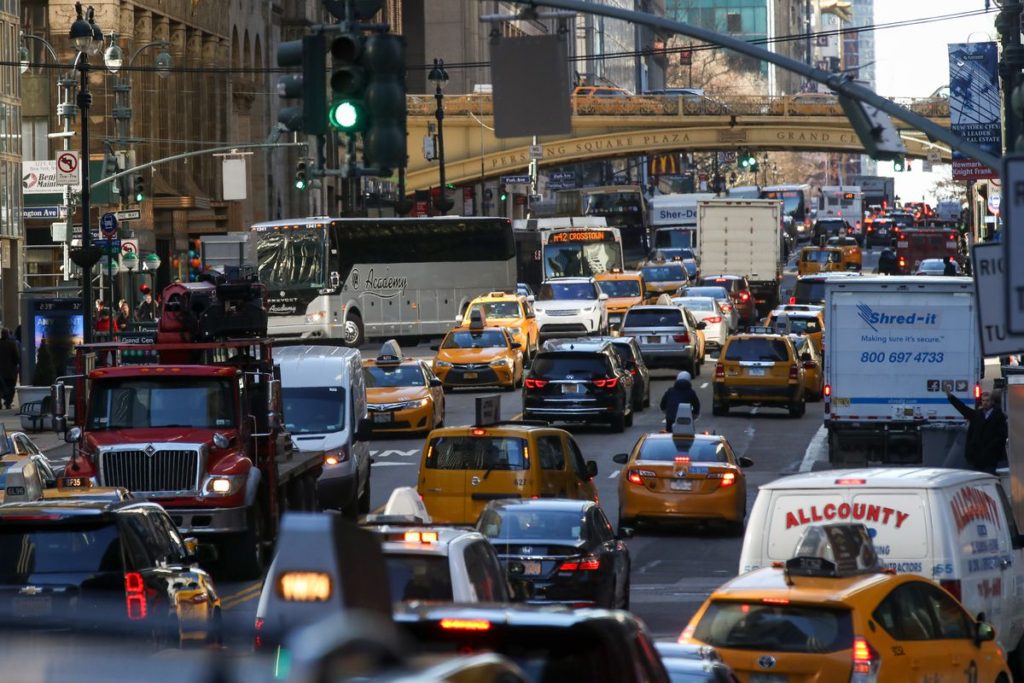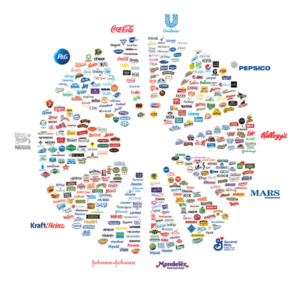
Update: As of April 1, the State Legislature and Gov. Cuomo passed the 2020 budget, congestion pricing included. Although the plan still lacks details, the numbers being discussed are similar to those from the FixNYC Panel report.
If you hail a cab, call an Uber, or drive your car to get around Manhattan, your commute will soon become more expensive. The New York state legislature expressed agreement last week to adopt a congestion pricing plan in the busiest parts of New York. The plan aims to raise money for the Metropolitan Transit Authority (MTA) to repair the city’s transit system. New York would be the first city in the United States to pass such legislation.
Although the current congestion pricing push lacks specifics, a pricing plan adopted last year in the 2019 state budget includes charges of $2.50 for taxis and $2.75 for ridesharing. This charge was blocked by a New York judge in December. The plan was touted as the first step in a major overhaul of New York’s public transportation, traffic laws, and environmental impact. The surcharge aims to balance the extra congestion from the increase in Uber, Lyft, and similar ride-hailing services, which now outnumber yellow cabs 4-to-1. Last year, a panel commissioned by the state released a report detailing the challenges of transportation and their possible solutions. That report suggests a comprehensive tolling plan for all vehicles below 60th street, with

The response from officials, academics, and transit advocates has been positive. Governor Cuomo is pushing very hard for the legislation. Even Mayor de Blasio has warmed to the idea, despite previously favoring a “millionaire tax” to pay for the MTA. Surprisingly, Uber released a statement agreeing with the tolls, saying, “It is the best way to fully fund mass transit and reduce traffic in the central business district,” although they warned riders of a price increase in response to the ridesharing surcharge.
Economists are strongly in favor of congestion pricing.
“Congestion pricing is one of the few environments in which […] we can make a lot of people better off at a smaller cost,” says NYU economics professor Sylvain Chassang. “You’re able to solve what’s called an ‘externality problem’ and raise taxes in a way that’s not disruptive.”
In economics, an externality is a side effect of commercial activity that affects other parties without being reflected in the cost of the goods or services provided. A more well-known example of an externality is pollution: a factory can pollute the air, hurting local residents and the environment, but not have to pay for it. This led to the carbon tax, and the same concept used there is applied to traffic via congestion pricing. It would disincentivize driving in crowded areas and make money off those who continue to do so.
There is near-unanimous agreement from economists on the benefits of taxing externalities, according to professor Chassang. Zero economists polled by the Initiative on Global Markets at the University of Chicago think congestion pricing would make citizens worse off.
Some form of congestion pricing has been implemented in several major cities, including London, Los Angeles, Singapore, and Stockholm, where they have been effective in reducing traffic and pollution. London’s implementation was so successful that, after just ten years, the city had reduced congestion to the point where it added bike and bus lanes to most roads without raising traffic. “We couldn’t find a single point where traffic didn’t flow,” said former London Mayor Ken Livingstone, in an interview with the BBC. “The only real problem we had were the buses were all running so ahead of schedule they had to wait at the bus stop.”
New York’s congestion issues are the third worst in the world, surpassed only by Los Angeles and Moscow. The aforementioned report estimates that New York City loses $20 billion a year to traffic-related issues. Traffic crawls at 4.7 miles per hour on average.
Despite its economic benefits and broad support, reactions from New Yorkers are mixed. Previously, no form of congestion pricing has passed in New York despite long-standing recommendations, including a failed attempt by Mayor Michael Bloomberg in 2008. On the legislative side, much resistance came in recent years from lawmakers who are unwilling to increase economic burden on their constituents. On the civilian side, reservations come from people whose livelihoods are tied to a car.
“I would stop taking my car,” said Carolyn Genovese, a Long Island resident who commutes to Manhattan four times a week. At almost $12 a day, the proposed fee would be too expensive for Carolyn, who said she would switch to riding the Long Island Rail Road. “That’s something I will avoid for as long as I possibly can,” she said, citing numerous issues with the commuter rail system, including bad maintenance, dirtiness, delays, and obnoxious passengers. A monthly pass for the LIRR would be $350 for Carolyn, less than the monthly cost of driving under the congestion plan.
Despite Uber’s corporate endorsement of congestion pricing, employees feel differently. “Uber will make money off this, drivers will not,” said Uber driver Gurvinder Singh. At $2.75 per ride under 96th Street, Gurvinder says he will lose $1000-1500 per month to the tax.
However, some New Yorkers are in favor of the pricing, even some drivers.
“I’d give up my car,” said Alec Reubenstein, a Midtown professional from the Upper West Side. “I prefer it to the Subway or bus, but I understand the logic.” Alec majored in economics and is in favor of congestion pricing in theory. He is in a unique situation: He works on 52nd Street, just below the proposed congestion zone, and lives on 70th Street, meaning he would be paying $11.52 to drive less than 20 blocks. People like Alec are perfect targets for the plan, as their contributions to traffic and pollution are huge compared to the relative benefit they get from using personal vehicles.
As it stands, New York would be the first city in the United States to implement this form of congestion pricing (LA only has a rush hour fee.) Whether its implementation will be as effective against traffic as London’s or Singapore’s remains to be seen, and the plan’s specifics have yet to be determined. Regardless, this type of progressive legislation is what New York needs to keep it competitive moving forward.
Arya Tousi
A previous version of this article mention that Mayor De Blasio favored a “


